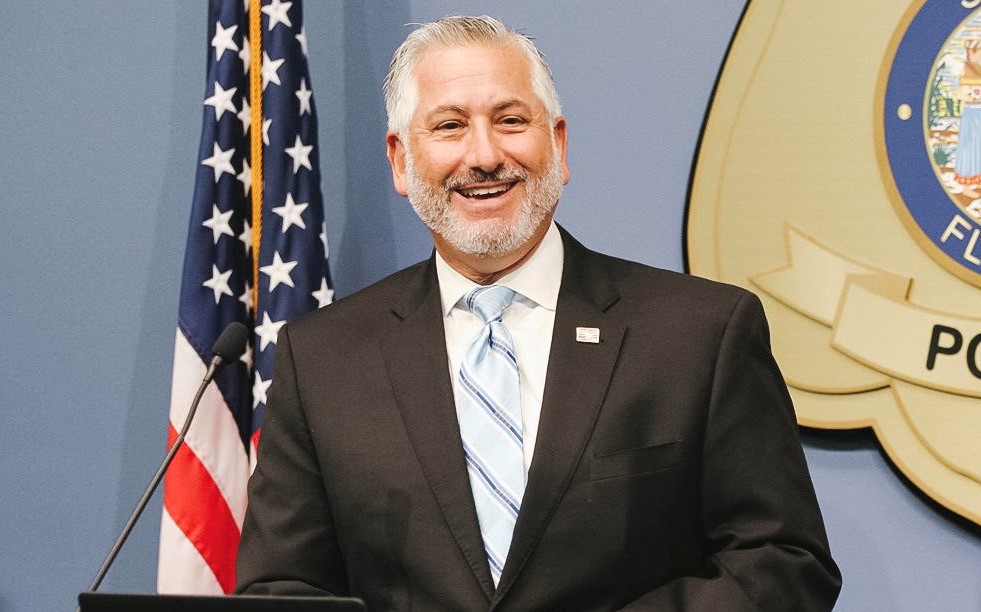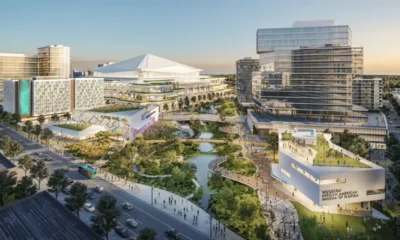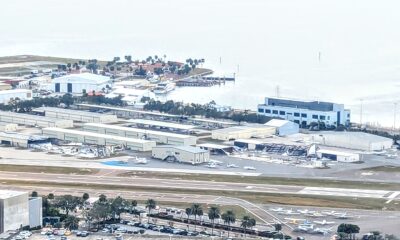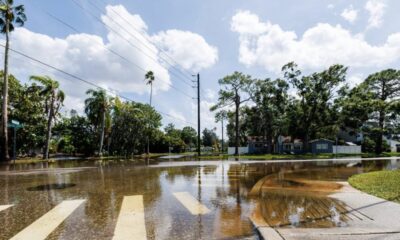Comm Voice
Black Lives Forward: Our work so far, our promise for the future

Welcome to the Catalyst’s Community Voices platform. We’ve curated community leaders and thinkers from all parts of our great city to speak on issues that affect us all. Visit our Community Voices page for more details.
We have seen the protests. We have heard the protesters. Over the past few months, St. Pete residents have joined with thousands across our nation to lift their collective voice to express anger and sadness over George Floyd’s death, the unjust killings of countless other Black people in this country, and the persistent injustice faced by African Americans who want to participate in and benefit from vibrant economies, or even just vote.
We acknowledge St. Pete’s own history of failings, including recent ones. We recognized early on in my administration that south St. Pete, home to a majority of our African American residents, didn’t need a rebrand (see: Midtown), but a true renaissance backed by resources, sound collective impact strategies, and hard work; it needed lasting, sustainable change – not quick fixes. These neighborhoods needed a new path forward, not a new name.
Like so many who have participated in peaceful protests, I, too, am hopeful for a better tomorrow. My goals, and the goals of those protesting peacefully are largely aligned.
Since before I even took office, when I asked Dr. Kanika Tomalin to be the first African American Deputy Mayor with a citywide purview, we have made a concerted effort to build a “city of opportunity where the sun shines on all who come to live, work, and play.” We’re proud of how far we’ve come since 2014, taking a comprehensive approach to equity, representation and advancement of conditions for African Americans in our city. Countless programs, policies, practices and protocols have advanced us toward our goal. They provide important context to our community’s contemplation of how we best move forward to ensure racial and social justice in our city.
Some of these efforts have been straightforward, such as remaking the best police department in the country and implementing community and relationship-oriented policing that, under the excellent leadership of Chief Tony Holloway, has yielded record high tips and record low crime; or establishing a ‘Second Chance’ program, diverting youth offenders to a city-run program requiring weekend community service shifts as opposed to arresting them for misdemeanors and transporting them to a mid-county juvenile center. This was especially important to me considering we live in a country with a justice system that disproportionately impacts Black people.
Some are complex and require constructive partnerships and ongoing hard work, such as the creation of our truly unique South St. Petersburg Community Redevelopment Area (CRA) that promotes reinvestment in education, workforce development, non-profit building capacity, housing and neighborhoods, business development, and commercial corridors. Our CRA, which is the largest in Pinellas County and is one of the largest in the State of Florida, differs from past approaches in that it invests in people, not just places. Approximately $10 million has been granted to date. And, as my first term ended, African-American poverty in St. Pete fell to an all-time low, to half the rate I inherited (34.9% in 2014 to 17.6%) in 2014.
All efforts have been aimed at making life better for all residents; at providing opportunity.
More recently, our police department brought forth an innovation that addressed the concerns of many protesters and made international news by turning down federal funding for more police officers and instead establishing a Community Assistance Liaison Division that would dispatch licensed social workers rather than law enforcement officers to respond to nonviolent calls – a decision also supported by our police union. The police department further reaffirmed its commitment to increase cultural competency, diversity, mental health, de-escalation and use of force training. And in June, we began to roll out our police body camera program, pledging to outfit every officer with one as soon as possible.
No column could capture all the work our city team and our community partners have put into realizing our shared vision of becoming a true City of Opportunity. While we have been focused on building up people at least as much as building up places, we are proud to have stepped up to purchase and save the Dr. Carter G. Woodson African American Museum, protect and expand green space in south St. Pete, reimagine the Manhattan Casino, purchase and begin the process to redevelop Tangerine Plaza with housing and grocery options, build an extraordinary skate park for our youth and young adults, and in what was only the first phase of our 22nd Street improvements project, make art and underpass lighting a focal point of the historic Deuces.
We have been purposeful about making the neighborhoods south of Central Avenue places our entire community drives to, not just through. That’s why the removal and renovation of vacant and boarded properties located primarily in south St. Pete has been such a priority. In January 2014, 546 such properties existed in the south St. Pete CRA. Today, only 90 remain, and our N-Team (Neighborhood Team) has helped qualifying residents fix up more than 300 homes in the CRA. Creating and maintaining a vibrant sense of place is as important as our empowerment efforts. This commitment, these values, are also reflected in detail in our Request for Proposals to redevelop the Tropicana Field site.
Investing in south St. Pete has been a hallmark of not just my time in office, but for the City of St. Petersburg for more than 20 years. As residents and visitors flock to enjoy the new St. Pete Pier (a project funded with restricted dollars), they should also know that significantly more dollars have been invested south of Central Avenue for people, businesses, financial empowerment, placemaking, infrastructure, and opportunities like youth employment, job training and entrepreneurship.
Even with all that has been accomplished, we can do more, and do better, and we will. We know that it takes a city – not a City Hall – to ultimately bridge the gaps that exist both in perception and reality, and to ensure that the work we’ve done prevents the injustice and horror suffered by George Floyd and too many others.
As I’ve said throughout this recent pandemic, we’re in this together. That’s when St. Pete works best, when the sun shines most. For as long as I am mayor, my team and I will be dedicated to such progress and equity, in every neighborhood, among every resident.








M. Reyes
January 14, 2021at8:22 pm
And that’s why he says that there is less poverty among African Americans and people of color: because the city wants to get rid of them. Unbelievable. Glorify Gentrification and call it Community Revitalization.
S. Rose Smith-Hayes
August 9, 2020at8:24 am
I take issue with the Poverty rate reduction and cause.. Many ‘Midtown’ residents have moved to other cities in Pinellas County and some moved to North St. Pete. I personally know some that have relocated to Gulfport, Pinellas Park, Seminole, and Kenneth city.